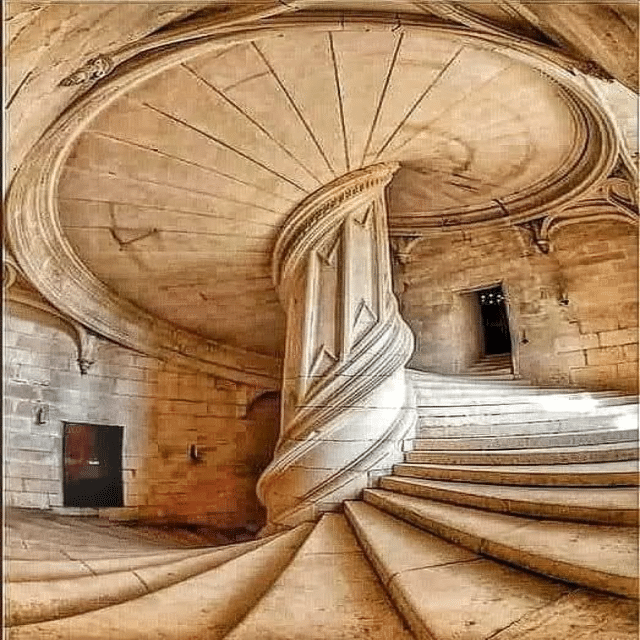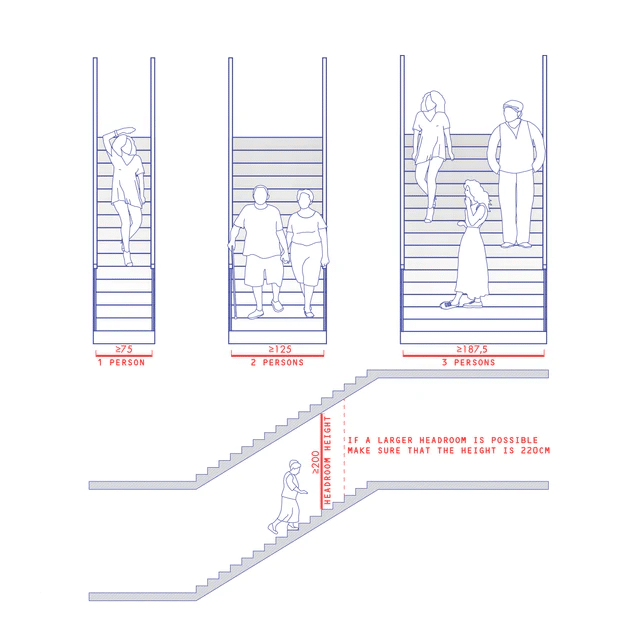Like every architectural element, the staircase has its own origin story and evolution graph. From the Egyptian civilization, which used staircases within pyramids to get from one chamber to another, to the Indus Valley civilization, which carved stones into steps to get down to wells, all parts of the world discovered the importance of a universal mechanism to go up and down in a functional building.
In this article, we are also going to talk about how many stairs there are in a flight.
History Behind the Number of Stairs in a Flight
The word flight means to escape or fly. This term was coined after the Renaissance in around 1703. During this time, a well-renowned architect, Andrea Palladio, wrote ‘The Four Books of Architecture’ in which he introduced us to the historical tale behind the name and emphasized the importance of a well-proportioned stairwell and flight system in every built structure. He wrote:
According to the bible, Esau saw his brother Jacob fleeing from him into the heavens and described the form he was using to do so as an oblique ladder from the ground to the land of the lords. This form was depicted by various artists in the form of steps, and due to its origin story, came to be known as a flight.
Therefore, a flight is a group of stairs between two landings. Later in the 18th century French Revolution, these mechanisms to elevate from one level to another were phrased ‘volee de escalate or ‘means to elevate.’

Once the term was coined, the flight had to be refined as per comfort while alighting. Slowing kingdoms started to realize an endless flight with a number of stairs is tiring to use and undesirable to commit to as a daily medium. Therefore, there came out the breaks between steps. At every few steps, there would be a landing that would be as deep as the width of the flight of stairs.
This would provide both visual and physical relief while climbing the stairs. It would create a moment of rest and reduce gravitational pull on the person as he would be pausing and walking straight for a while, as opposed to moving upwards against gravity.

The next problem to solve was that of the height of the stairs. As every place has its way of measuring and designing its flight, a single person would not be able to adapt every time. It would feel uncomfortable to adjust muscle memory to different heights of stairs each time. Thus, a universal standard was set for the riser or the vertical part of each stair, and it would be 15cm or 0.15m per stair. This height would suit both European and Eastern body types alike. It wouldn’t be too exhausting or too little of a climb.

Then, it was noticed that the limit to healthy alight was 10 such stairs at a time. Therefore, in residential buildings where stairs are used most often in a day, 10 stairs of 0.15m height each consist of a flight ideally. Post a flight, a mid-landing is ensured pot, and the staircase turns its direction. This turn in direction provides physical relief to the user, along with making judicious use of the space available for construction.
All of this calculation was concretized during the Vitruvian era, Vitruvius being a Roman architect who majorly influenced proportions and the study of anthropology in the construction of buildings.
Conclusion
To this day, this calculation is universal. Based on this, the building codes and safety standards are designed. This ensures that residential buildings have a floor-to-floor height of 3 meters. i.e. a cumulation of two flights of alight between every floor. Similarly, commercial buildings are built with 4.2 meters of floor-to-floor difference.
This allows more head space, creates the feel of spaciousness, and leads to a community feeling in public areas. It ensures 14 steps per flight in commercial and public buildings and two flights in opposite directions to cover the floor-to-floor height. And the designs are endless.
Comment down below if you liked if this article helped you understand the history behind the number of stairs in a flight.

